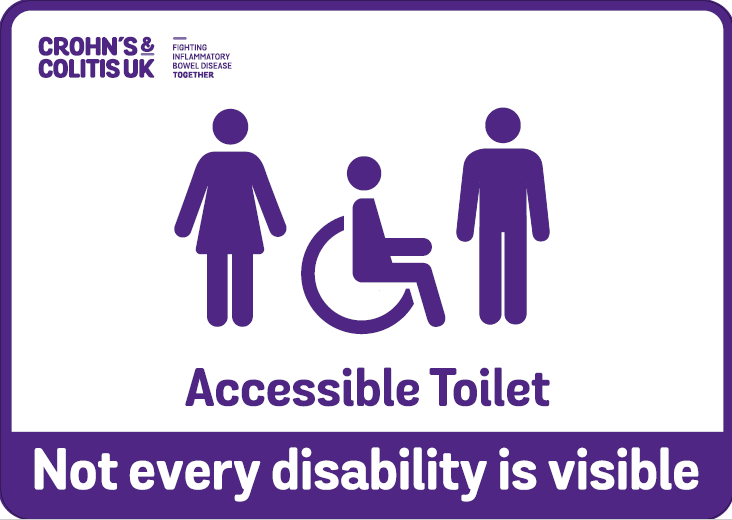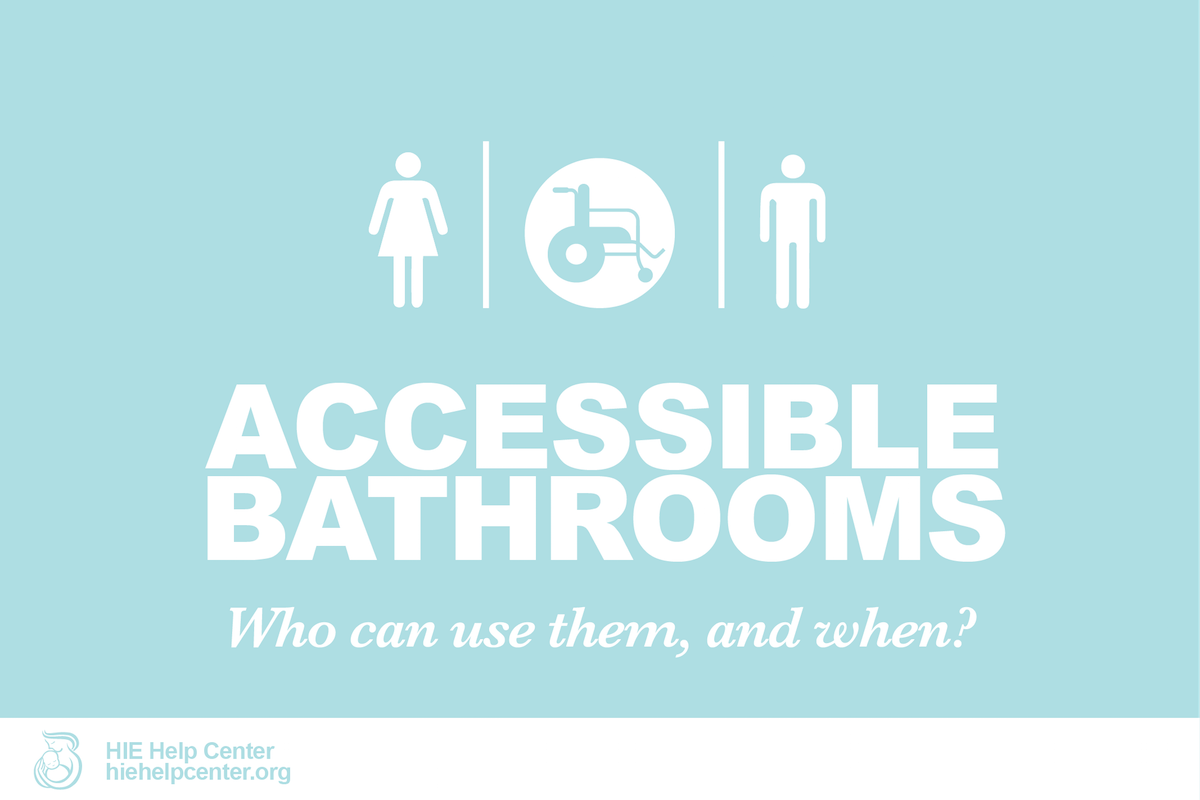Back in 1999, the author (at the time) of popular Slate column “Dear Prudence” found herself in hot water after answering an etiquette question dealing with accessible bathroom stalls. She had told a letter writer that it was fine for non-disabled people to make a habit of using these stalls simply because of personal preference, noting that she had “never seen a disabled person waiting, though that would not be the end of the world.”
Similarly, ethicist Randy Cohen told an NPR caller that there is a distinction between accessible parking spaces and accessible stalls (although he did not advocate for using accessible stalls at whim):
“In the parking lot, you may park your car, you may be gone a really long time, right? Or an unknown amount of time…But you’re not gonna be in [an accessible stall] all that long, so even if someone has to wait, they have to wait momentarily.”
Although it is true that having a disability does not guarantee immediate bathroom use, people who do not require accessible stalls could still be vastly more considerate of those who do.
In a recent column for Cerebral Palsy News Today, Brittney Clouse wrote that, “I know you think that you will ‘only be a minute.’ Maybe you don’t think that anyone could possibly need that stall or maybe you don’t think at all.”
4 simple rules people without disabilities can follow in public restrooms
- When both a standard stall and an accessible stall are open, use the standard stall. Or, as Clouse puts it, “In most public restrooms, I have the option of one toilet, one stall. You have a choice of five.”
- If you’re waiting in line and notice someone with mobility equipment or a service animal, allow them to go ahead of you if the accessible stall is the first to open. You may also ask whether anyone else needs the stall (not all disabilities are immediately apparent – see next point).
- Remember that people with “invisible disabilities” (conditions which are not obvious to a casual observer) may also require accommodations in public restrooms. Avoid outwardly judging others for seemingly inappropriate use of an accessible stall.
- If you don’t have a disability and anticipate occupying a stall for a long period of time, do not use the accessible one even if it is the first to become available.
Invisible disabilities and accessible bathroom stalls
Jenn Penny, in an article for The Mighty, explains that despite being able to get around without mobility equipment, her symptoms of pain, dizziness, and instability mean that she requires a certain amount of space and a handlebar in order to safely pull herself up after using a toilet:
“Sometimes I have to wait for the accessible stall because the other ones are so small that I have a tough time maneuvering in them when my body is so unstable and in so much pain. I have fallen forwards more than once onto the toilet seat or partially into the bowl. It’s horrifying.”
Unfortunately, upon exiting accessible stalls, Penny is often “glared at, scoffed at, and stared down by other people waiting in line who are of the mindset that only visibly disabled people can use that stall.”
New signage aims to educate
Dirty looks aren’t the only problem; a recent study revealed that 49% of people who use accessible stalls due to invisible disabilities have also received negative comments from a stranger. In response to this issue, the charity Crohn’s & Colitis UK has launched a campaign called “Not every disability is visible,” with the aim of changing signage on accessible toilets. The sign they’re promoting includes a wheelchair user, as well as two standing figures.

While more inclusive signage is a great step, individuals can also easily change their behavior to be more accommodating of those with invisible disabilities. Penny offers the following advice:
“Please, don’t scoff at someone using the accessible stalls. Consider asking the rest of the line if they need it before you enter if you are able bodied, and never feel ashamed of using it if you need it, regardless if you have a visible or invisible disability. Let’s stop assuming we know everything about a person just by looking at them. No one knows the struggles a person faces. We all need to pee.”
Conclusion
We have touched on a few simple ways that restroom-goers can be more considerate of disabled people. Because there aren’t currently clear laws dictating the use of accessible bathroom stalls, rules surrounding their use are slightly more complicated than those of accessible parking spaces. However, that does not mean that mere preference is a valid reason for people without disabilities to occupy accessible stalls.
Readers, what do you think? Do any of the rules discussed here seem unreasonable? Or did we miss any important ones? Please let us know in the comments!
Other Recent Posts
Haircut Tips for Kids with Sensory Processing Issues
Home Activities for Kids with Disabilities
Standing Wheelchairs: Why Won’t Insurance Agencies Cover Them?



Leave a Reply
You must be logged in to post a comment.